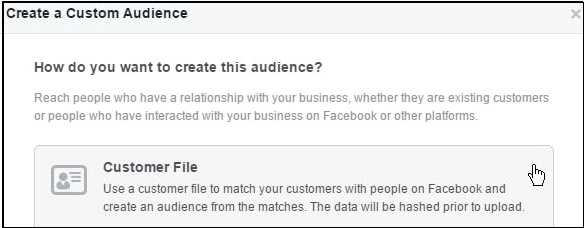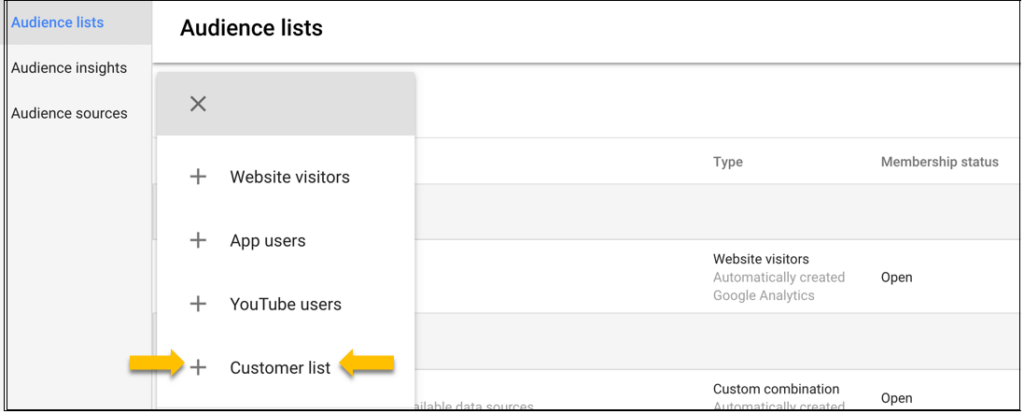Using paid ads: 6 ways small business can compete with big business in 2023


Small businesses (SMBs) often feel a hard struggle in the business arena – the big players have the power, the money, and the reputation.
So if you’re an SMB and your work is cut against you – how do you compete? Simple! By outsmarting the giants with wits, strategy, and cost-efficient pinpoint targeting.
These are all elements of paid advertising, and SMBs are using them to give big businesses a run for their money. So let’s find out how to do the same if you’re just starting out.

Why you should use paid advertising for your small business
Obviously, small businesses don’t have quite as much reach and presence as big businesses.
Until you realize that over half the world (4.76B people) use social media every day.
Meaning that—using adequate tools and platforms at your disposal—you can fine-tune your paid ads strategy so it hits exactly who it needs. Also, paid advertising allows you to:
- Cast a wide net, no matter how small: With so many people using social media, your prospecting pool can be as small as your neighborhood or as big as the world.
- End up paying less: As an SMB, your budget is limited and traditional ads such as television or billboards cost too much. With paid ads, you pay depending on your goal – whether it’s views, clicks, or conversions, allowing you to control your costs.
- Get quick results: It doesn’t take long for paid ads to kick in, allowing you to see the impact almost immediately, which is crucial for SMBs looking to see a quick bang for their buck.
- Track and measure performance: The majority of social platforms have sophisticated analytics tools as well as conversion tracking pixels that can help gather audience data.
But this doesn’t mean you should just aimlessly throw money at paid ads. Let’s dive a bit deeper.
When should your business turn to paid ads?
The question that can make or break your enterprise. Rushing into paid advertising too early drain your entire budget, without necessarily helping you grow or acquiring any real customers.
That’s because effective startup marketing entails an initial “push” with paid ads, gathering user data to gain insights into your target audience before experiencing notable outcomes. Additionally, the management of paid ads poses its own set of challenges…
The one mistake small businesses make when starting paid ads
Let’s say you want to start running Google Ads for your small business, and you own an ecommerce store.
The cost per click (CPC) for that niche is $2.69 – meaning you’ll need around $2700 to get 1000 clicks. Data provided from that engagement will help Google’s algorithm tweak campaigns and make them more efficient.
By spending less, you risk Google taking too much time to acquire data and learn. The same goes for any other social media platform that relies on data tracking and targeting. Of course, some may cost less – TikTok Ads CPC is lower than $1, for example.
💡 TIP: Before diving into paid advertising strategy, make sure you build enough organic brand presence, drive at least some organic engagement and traffic and acquire first-party data. It can help your small brand a lot.
Ways you can compete with big businesses using paid ads
Remember – paid advertising accounts for all online ads that you pay for. And that’s a colorful palette of different possibilities, channels, and platforms.
But let’s focus on a few fundamentals first. Here’s how you can compete with big businesses:
#1 – Use laser-focused targeting from social media platforms
Hyper-accurate targeting is one of the main advantages of using paid ads.
Social platforms have highly sophisticated algorithms that are able to “figure out” what type of content their users are interested in.
You’ve probably noticed it, as well in how Facebook targets you with ads that are often right on point, or how TikTok or Instagram would suggest content that you find hard to skip.
When setting up campaigns in the platforms’ Ads manager, make sure you’re leveraging targeting options as much as you can.
#2 – Find your ideal platform
Diversify, diversify… Marketers often say you shouldn’t put all your eggs into one basket, but when you’re a small business – baskets can be quite expensive.
However, you can still “outsmart” the market by finding the channels where most of your audience are.
If you’re selling car parts, for instance – you’re not likely to have success with Pinterest ads, simply because 77% of the platform’s users are women – and possibly only a small percentage interested in cars. Here’s some more examples:
- 61% of Gen Z uses TikTok – which could be a gold mine if that’s your target audience
- 62% of US Reddit users seek financial advice on the popular message board, if you’re a business consultant, this could be your platform.
- Amazon recently grew their ad business by 19% and has possibly the highest intent customers – people come there already looking to buy, right? If you need a quick win.
So fill up a couple of baskets you know are gonna crush it. You get the gist…
#3 – Find high-intent customers by leveraging first-party data
Believe it or not, you may already have all data that you need to start competing. That data is your email and SMS list.
You can throw that list into platforms’ super effective machine learning algorithm and watch the, as they go through their own data to find users from those lists – and users with similar platform behavior – and target those with ads as well.
On Facebook, you can create a custom audience and import your list as a CSV file to start the automated process.

It’s similar stuff on Google as well.

This is how you can utilize your own most loyal customers to acquire new ones and compete with the big players.
#4 – Target locally, then expand
You’re a small business. Start small.
All platforms allow geotargeting, and if you’re providing a service, or have a brick-and-mortar retail store, make sure you announce your presence to them first.

Attracting users from around your area will help you gain valuable feedback, loyal customers, and enough data to expand your targeting to cover more and more ground.
Also, platforms such as Google prioritize local businesses in search results, which immediately allows you to stand side-by-side with bigger companies.
#5 – Use native ads
This is a little out of the box, but native advertising is one of the best ways to promote a small business to a larger audience.
If you are unaware, native ads utilize the format and tone of the platform they’re on, similar to social media platforms – but think articles on news websites and similar media.
This also includes, for example, newsletter placements – an underrated way to get to high-intent customers in your vertical.
Let’s say you advertise in a business newsletter as a business consultant. You’re already getting yourself in front of thousands of people that are interested in financial advice.
Basically, you know what you pay for. Sounds good? That’s because it is.
It’s time to level the playing field
Feeling that? It’s the David vs. Goliath scenario, and your small business is ready for it.
With over half the world using social media every day, small businesses can take advantage of various platforms to reach their target audience and beat the giants of the industry.
But before you jump head-first into the advertising ocean, make sure you work on your brand presence organically and pick out the best channels to test on!
